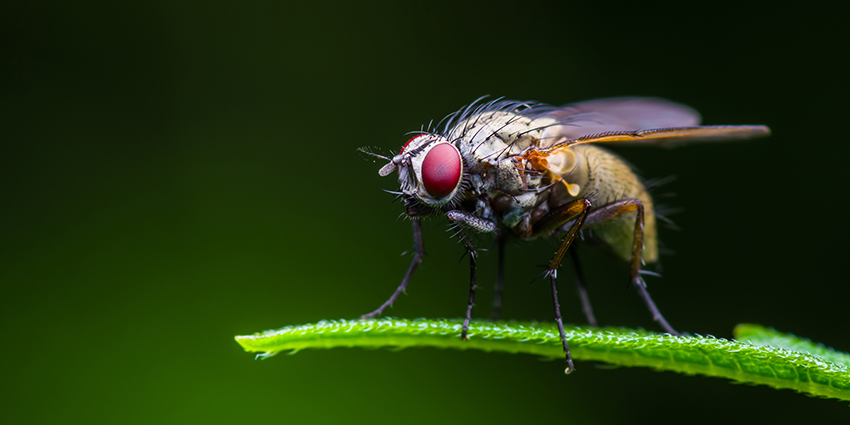
If you’ve ever woken up in the middle of the night to go to the bathroom and stumbled around in the dark, banging into walls or dressers in a room you’ve walked through countless times, you’ve experienced the effects of inadequately calibrated neurons.
In many animals, humans included, an accurate sense of direction is generated with the help of brain cells known as head direction neurons, which do so by incorporating two main streams of information—visual landmarks and positional estimates based on self-movement.
Without the former, our ability to navigate even familiar locations degrades. But given a visual landmark—like the glow of an alarm clock or the shadow of a door—our internal map of the environment refreshes, and we can make our way with ease once again.
A similar process occurs in fruit flies, which use so-called compass neurons to keep track of the orientation of their heads and body. In a new study, published in Nature on Nov. 20, Harvard Medical School neuroscientists have now decoded how visual cues can rapidly reorganize the activity of these compass neurons to maintain an accurate sense of direction.
By tracking individual neurons in fruit flies as they navigate a virtual reality environment, the researchers shed light on neural mechanisms that allow organisms to build a spatial map of their world, as well as processes involved in short-term memory.
“When we look at the pattern of connections between compass neurons and the visual system, we see that they are remodeled by visual experiences,” said senior study author Rachel Wilson, the Martin Family Professor of Basic Research in the Field of Neurobiology in the Blavatnik Institute at HMS.
“These changes are happening over minutes and correspond with the timescale that we experience subjectively when we enter a new environment and explore it,” Wilson said. “To me, it’s remarkable that we can get insight into something as complicated as spatial navigation by studying a brain that’s smaller than a poppy seed.”
Virtual sun
Comprised of only around 100,000 neurons, the Drosophila fruit fly brain is capable of highly complex behaviors. Previous studies have shown that during navigation, compass neurons, also known as E-PG neurons, are critical for the fly’s ability to sense direction.
These neurons are arranged into a ring, like the dial of a compass. As the fly moves, a corresponding “bump” of neural activity moves around the ring like a compass needle—if the fly turns 90 degrees, the bump of activity also rotates 90 degrees.
In the dark, the accuracy of this “needle” diminishes due to the absence of visual clues, as the organism only has estimates of its own movements to navigate with. But given a visual prompt, the needle snaps back to place, accurately reflecting the fly’s heading.
To investigate how visual inputs alter this process, Wilson and team—including lead study author Yvette Fisher, research fellow in neurobiology; Jenny Lu, an MD/PhD student; and Isabel D’Alessandro, a research assistant—carried out a series of experiments that combined virtual reality with high-powered microscopy.






